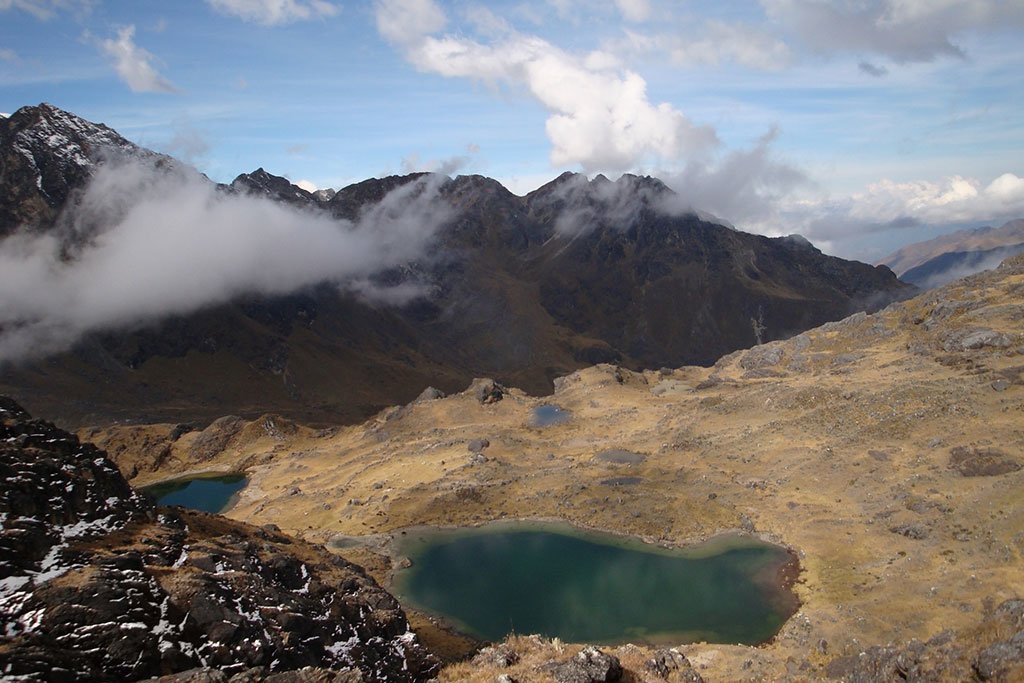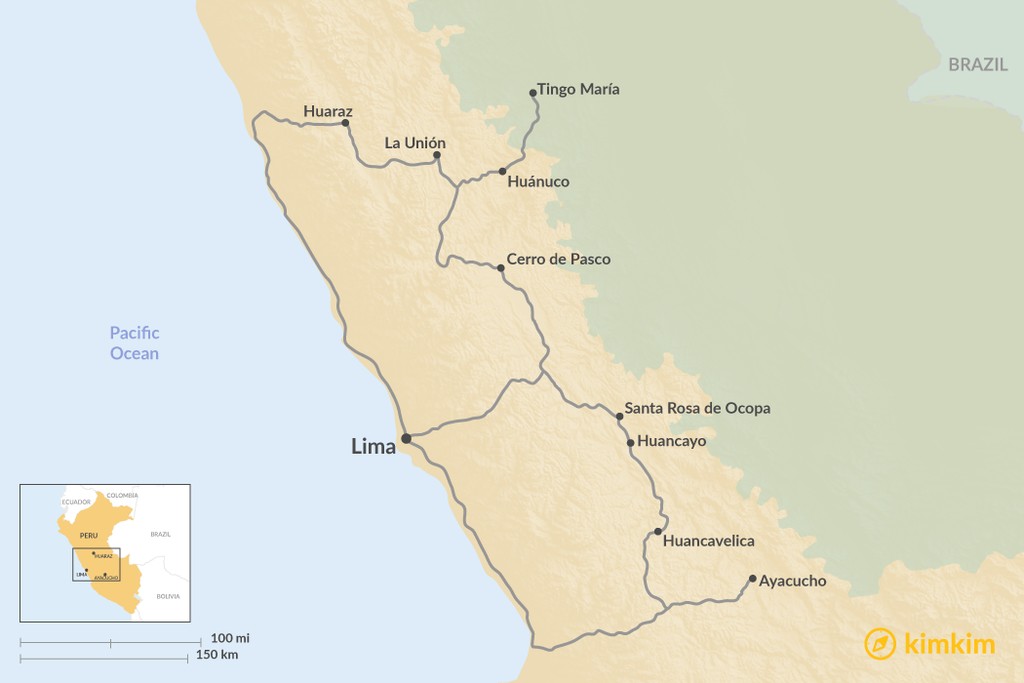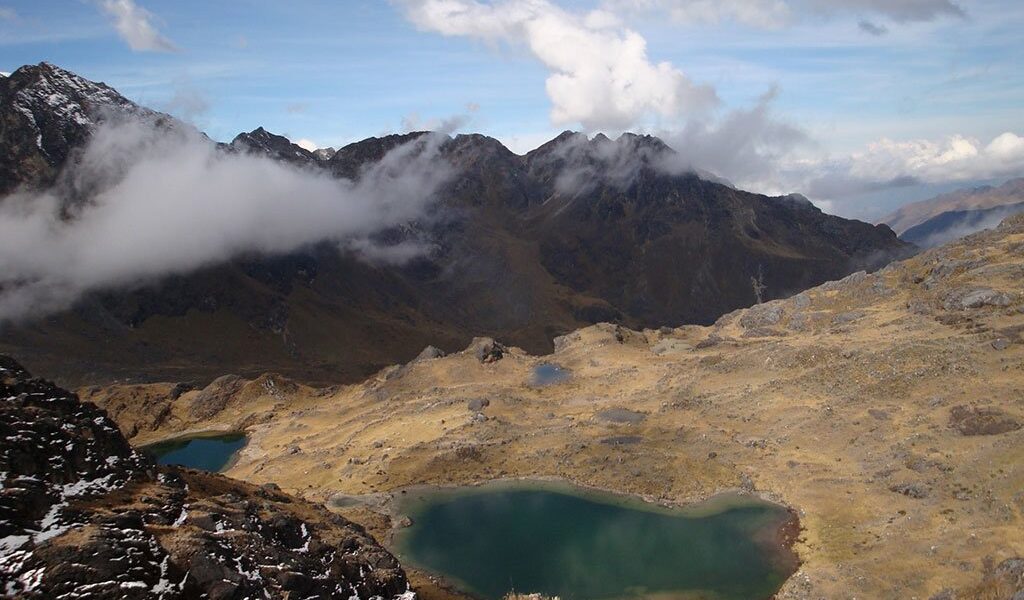
Between the hiking mecca of Huaraz and the tourist hotspot of Cusco, lies an immense swathe of Peru’s Andean mountains — the Central Andes. These mountains reveal a less-travelled, more authentic side of Peru, where you can veer off the beaten path and travel back in time to a more traditional mode of life.
## Ayacucho: A Colonial Gem in the Heart of the Andes
Ayacucho, a city often hailed as the “Cusco that never was,” or perhaps the “Cusco of the future,” possesses a unique and captivating charm. Unlike some of its more heavily touristed counterparts, Ayacucho offers a glimpse into a more authentic and less diluted Peruvian experience. This vibrant city, adorned with an array of captivating colonial churches and brimming with poignant museums, is truly a feast for both the eyes and the soul. Prepare to be transported back in time as you wander through its historic streets, each corner revealing a new architectural marvel or a hidden cultural treasure.
Beyond its visual splendor, Ayacucho also tantalizes the taste buds with its rich culinary heritage. A visit to Ayacucho is incomplete without indulging in the traditional local specialties offered in its numerous restaurants. Be sure to sample the puca picante, a hearty and flavorful stew featuring a delectable peanut sauce with a subtle kick, guaranteed to leave a lasting impression on your palate. The culinary scene in Ayacucho is a vibrant tapestry of flavors, reflecting the region’s history and traditions.
Venture beyond the main thoroughfares and discover Ayacucho’s myriad secret courtyards, each a hidden oasis teeming with trendy bistros and boutique shops. These tucked-away gems offer a more intimate and personalized experience, allowing you to connect with the local artisans and entrepreneurs who contribute to the city’s unique character. It’s in these unexpected corners that you truly begin to appreciate the unpretentious spirit of Ayacucho. The city exudes a sense of authenticity, a quality that can sometimes feel absent in larger, more commercialized tourist destinations such as Cusco.
For those seeking to explore beyond the city limits, even a short journey into the surrounding countryside reveals little-visited remnants of the Inca and Wari civilizations. These archaeological sites, often overlooked by mainstream tourism, offer a fascinating glimpse into the region’s rich pre-Columbian history. Embark on bumpy back roads that wind through splendid sections of the rocky altiplano, leading to remote communities that seldom, if ever, encounter foreign travelers. This is where you can truly immerse yourself in the local culture and experience the raw beauty of the Andean landscape. The unspoiled beauty of the region surrounding Ayacucho provides a striking contrast to the bustling city center, offering a diverse and enriching travel experience.
*Expert tip: For an adventurous and budget-friendly excursion, consider taking the local bus to the Wari ruins, located 20km above Ayacucho. The bus departs from Paradero Magdalena, situated at the eastern end of Cáceres. This journey offers a unique opportunity to interact with local residents and witness the daily rhythms of life in the Peruvian Andes.*
## Huancayo: Hub of the Central Andes and Gateway to Handicraft Havens
Huancayo, the most important city in the Central Andes, stands as a vibrant hub of commerce, culture, and connectivity. It is renowned as an ideal base for exploring the picturesque Río Mantaro valley, a region where time seems to have slowed down and where traditional communities continue to produce some of South America’s most exquisite handicrafts. This area is a living testament to the enduring legacy of Andean artistry, with each piece reflecting the unique cultural heritage of its creators.
A trip to Huancayo is not complete without a visit to its famous markets. These bustling marketplaces offer intriguing insights into the colorful quirks and vibrant dynamics of Andean commerce. Here, you can witness firsthand the bartering traditions, the diverse array of local produce, and the intricate craftsmanship that defines the region’s economy. Immerse yourself in the sights, sounds, and smells of these bustling markets, and you’ll gain a deeper appreciation for the vital role they play in the lives of the local people.
Huancayo also serves as the starting point for two truly scintillating rail journeys. The world’s second-highest train line bravely scales the mountains westward towards Lima, offering breathtaking panoramic views of the Andean landscape. Another train journey heads south to the hauntingly beautiful 16th-century city of Huancavelica, a journey that transports you back in time and reveals the rich colonial history of the region. These train journeys are not just modes of transportation; they are immersive experiences that allow you to connect with the landscape and the people who call it home.
Increasingly, Huancayo is gaining recognition as a premier hiking center. The region offers a diverse range of trekking opportunities, from challenging ascents to the glacier of Huaytapallana to leisurely explorations of the lofty rock formations of Torre Torre. Whether you are a seasoned mountaineer or a casual hiker, you will find trails to suit your skill level and interests. The diverse landscapes surrounding Huancayo provide a stunning backdrop for unforgettable hiking adventures.
*Expert tip: Take a journey out to Ahuac, located on the derecha (right-hand) side of the Río Mantaro valley. From there, embark on a hike up to the serene mountain lake, Laguna Ñahuimpuquio, and continue onward to discover some fascinating pre-Inca ruins nestled on the ridge above. This trek offers a unique opportunity to explore the natural beauty and historical significance of the region, all while experiencing the thrill of a challenging hike.*
## Santa Rosa de Ocopa: A Beacon of Learning in the Mantaro Valley
The left side of the wide, verdant Río Mantaro valley, northwest of Huancayo, is widely recognized for its thriving handicraft production centers. However, amidst this artistic landscape, there lies another major attraction that often goes unmentioned. The extraordinary beacon of learning that is the Santa Rosa de Ocopa convent stands proudly just one hour north of Huancayo, conveniently located on the Jauja road.
This magnificent convent, constructed in the 18th century by the Franciscan order, stands as a testament to the region’s rich religious and cultural heritage. It features a remarkable collection of colonial art, showcasing the artistic talent and religious fervor of the era. But perhaps the convent’s most prized possession is its delightful library, which houses thousands of ancient texts dating back over five hundred years. This invaluable collection offers a glimpse into the intellectual and spiritual life of the past, making the Santa Rosa de Ocopa convent a must-see destination for history buffs and literature enthusiasts alike.
*Expert tip: Consider embarking on a day trip from Huancayo to the Santa Rosa de Ocopa convent. Along the way, factor in visits to some of the charming crafts villages that dot the landscape. San Jerónimo de Tunán is renowned for its exquisite silverwork, while Cochas Grande is famous for the production of intricately decorated gourds. This day trip offers a comprehensive experience, combining historical exploration with cultural immersion.*
## Huancavelica: A Colonial Jewel in the Andes
Three hours south of Huancayo lies Huancavelica, a city that stands as one of the most spellbinding colonial settlements in the entire Andes region. Its numerous 16th and 17th-century churches serve as magnificent showcases for the silver that once brought fame and fortune to the area. The intricate details and masterful craftsmanship of these religious structures reflect the wealth and artistic prowess of the colonial era.
Beyond its architectural grandeur, Huancavelica also boasts natural wonders, including several thermal springs located in the surrounding vicinity. These natural hot springs offer a relaxing and rejuvenating experience, providing a welcome respite from the rigors of travel. Immerse yourself in the therapeutic waters and soak in the stunning natural beauty of the Andean landscape.
In Huancavelica, many aspects of daily life continue to unfold as they have for centuries, largely due to the high concentration of indigenous Quechua people who call this city home. This strong Quechua presence ensures that the traditions, customs, and language of the past remain vibrantly alive in the present. The city’s vibrant cultural tapestry is further enriched by the many magical festivals that occur throughout the year, offering visitors a unique opportunity to witness the rich traditions and spiritual practices of the Quechua people.
*Expert tip: Embark on a hike south of Huancavelica to the abandoned mines of Santa Barbara. From this vantage point, you will be rewarded with stupendous views of the entire district, offering a panoramic perspective of the city and its surrounding landscape.*
## Cerro de Pasco: A City on the Brink
Cerro de Pasco, perched at a dizzyingly high altitude of 4333 meters, may not be the most aesthetically pleasing locale in the Andes, but it is undoubtedly one of the most fascinating. Located three hours south of Huánuco, this mining center vividly exemplifies the complex and often conflicting relationship between the traditional and the modern in South America.
The recent mining boom in Cerro de Pasco has lifted many locals out of poverty, providing them with economic opportunities that were previously unimaginable. However, this economic progress has come at a cost. The rapid industrialization has led to soaring pollution rates, threatening the quality of life for residents. The entire city teeters precariously on the brink of collapse into the gaping hole of its main mine shaft, highlighting the environmental challenges and social complexities that accompany resource extraction.
Despite these challenges, Cerro de Pasco offers a unique glimpse into the realities of life in a mining community. Outside of town, the eerie bosque de piedras (stone forest) of Santuario Nacional Huayllay awaits. This natural wonder features immense towers of rock that twist dramatically into zoomorphic shapes, resembling alpacas and elephants. The Santuario Nacional Huayllay is a surreal and breathtaking landscape, offering a striking contrast to the industrial backdrop of Cerro de Pasco.
*Expert tip: For a memorable do-it-yourself adventure, consider approaching Santuario Nacional Huayllay via the back road from Lima, passing through the charming towns of Canta and Obrajillo. This route offers a scenic and less-traveled alternative, allowing you to experience the authentic beauty of the Peruvian countryside.*
## La Unión: Gateway to Ancient Wonders
Heading southeast from Huaraz, the small town of La Unión marks the beginning of the Central Andes region after a five-hour, spine-jolting bus journey. From La Unión, it is another five hours farther southeast to reach Huánuco. This ultra-traditional community, which sees very few tourists, serves as a jump-off point for one of the most impressive ancient ruins in Peru: Huánuco Viejo.
This vast Inca settlement, covering over 2 square kilometers, occupies a barren rise two hours’ tough hike above La Unión. The sheer scale and complexity of Huánuco Viejo offer a testament to the power and sophistication of the Inca civilization. Exploring these ruins is a rewarding experience for those willing to undertake the challenging hike.
*Expert tip: Make the three-hour trip from La Unión up to the even more traditional town of Tantamayo. From there, you can visit two major sites of the pre-Inca Yarowilca culture: Susupillo and Piruro. These archaeological sites offer a glimpse into the rich history and cultural diversity of the region, predating the Inca empire.*
## Getting There & Away: Navigating the Central Andes
Tingo María and Huánuco, located in the northern part of the Central Andes, as well as Ayacucho in the south of this region, all have airports. However, the region is typically reached by bus, which offers a more immersive and authentic travel experience. The cities of Tarma and Huancayo have the quickest and most frequent bus connections to Lima, with journey times of approximately six and nine hours respectively from the Peruvian capital.
Travel around the Central Andes is most commonly done by bus, and this is arguably the best way to gain an insight into the local culture. The bus journeys provide ample opportunities to interact with local residents, witness the daily rhythms of life, and appreciate the stunning natural beauty of the Andean landscape. Trains sporadically connect Lima with Huancayo, and Huancayo with Huancavelica, running several times per week. These train journeys offer a more leisurely and scenic alternative to bus travel, allowing you to soak in the breathtaking views and experience the unique charm of the Andean railway system.
Word count: 1690

B-2140

